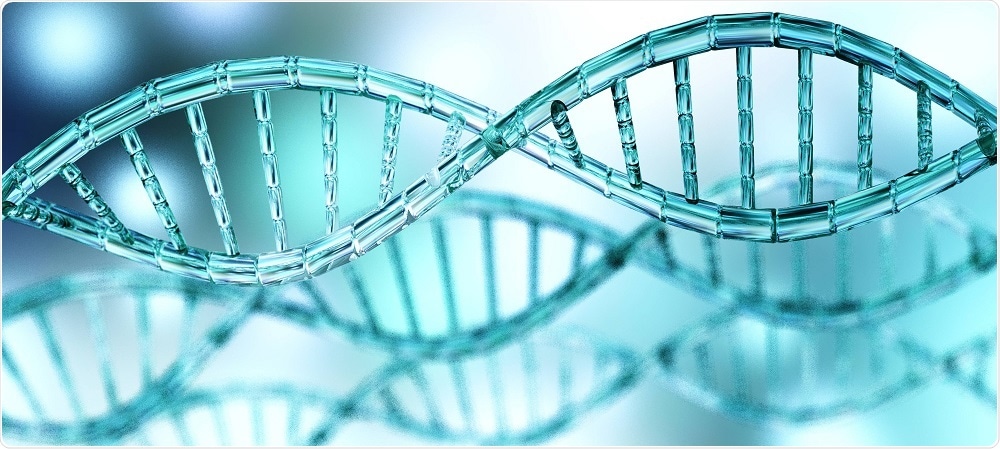Pyrosequencing is a method of DNA sequencing that detects light emitted during the sequential addition of nucleotides during the synthesis of a complementary strand of DNA.
 Image Credit: ustas7777777 / Shutterstock
Image Credit: ustas7777777 / Shutterstock
Pyrosequencing can be used to detect DNA and RNA from almost any source, and has applications in bacteria resistance screening, drug development, epigenetics, and many other fields.
Process of Pyrosequencing
Pyrosequencing occurs in six major steps:
- The DNA that is to be sequenced is broken up into fragments of around 100 base pairs of single-strand DNA.
- A polymerase chain reaction (PCR) is run to create millions of identical copies of each DNA fragment, which are split across thousands of wells, with just one type of DNA fragment per well.
- The DNA fragments are incubated with DNA polymerase, ATP sulfurylase, and apyrase enzymes, and adenosine 5’ phosphosulfate and luciferin substrates.
- One of the four types of nucleotides that make up DNA are added to the wells, which begin to be incorporated onto the single-strand DNA template by DNA polymerase at the 3’ end, releasing pyrophosphate.ATP sulfurylase then converts pyrophosphate to adenosine triphosphate (ATP) in the presence of adenosine 5’ phosphosulfate. ATP then takes part in the luciferase-mediated conversion of luciferin to oxyluciferin. This process emits light proportionately to the amount of ATP taking part in the conversion, which is picked up by a detector.
- Unused nucleotides and ATP degrade to apyrase, allowing the reaction to start again with another nucleotide. This process is repeated, adding each nucleotide one after the other until the synthesis is complete.
- A detector picks up the intensity of light emitted by the process, which is then used to infer the number and type of nucleotides added. For example, if three cytosine nucleotides are added sequentially to the same fragment of DNA, the light emitted will be three times more intense than fragments of DNA with only one cytosine nucleotide added.
If no light is emitted upon the addition of cytosine, then the next complimentary base in the single-strand DNA template must be one of the other three nucleotides.
It should be noted that of the four nucleotides added during pyrosequencing, deoxyadenosine triphosphate (A) is replaced with deoxyadenosine α-thio triphosphate to avoid a false signal from early reaction with luciferase.
The method is limited to around 300-500 nucleotide base pairs, compared with the greater chain lengths of over 1000 base pairs achievable using Sanger sequencing. It is, however, less expensive and commercially available.
Applications of pyrosequencing
Pyrosequencing
Pyrosequencing is used to reveal the genetic code of a section of DNA. It is also able to detect single nucleotide polymorphisms, insertion-deletions or other sequence variations, in addition to being able to quantify DNA methylation and allele frequency.
For example, genome regions associated with a genetic disorder can be narrowed down further to identify specific genes and variations within them, or an inherited negative response to certain drugs can be checked for before the drug is prescribed.
The method of drug resistance in a new strain of bacteria can be determined by its genetic change compared to an ancestor, or epigenetic methylation of DNA in a cancer cell can be detected in order to determine the best course of treatment.
Further Reading
Last Updated: Oct 31, 2018